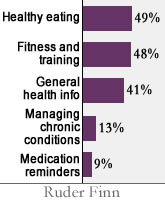While amazing, bright favors (and colors) are an obvious reason to embrace the spring season, according to the USDA, buying local, seasonal produce may reduce our carbon footprint and help local economies thrive. Here are some of the best picks for spring:
Arugula: It has a peppery flavor and only stays fresh for a couple of days. It’s ultra-low in calories and packs a healthy dose of vitamin K. It’s best in the early spring.
Dandelion Greens: They have a bitter, tangy flavor and are good in salads or warm dishes. They’re packed with vitamins A and K (per cup, more than 100 and 500 percent of the daily value). The best greens pop up during early spring and should be bright green and crisp.
Fennel: A cup has 3 grams of fiber and 17 percent of the recommended daily value of vitamin C. The flavor is similar to licorice, but sweeter and subtler.
Radishes: These roots are at their best all spring. While they’re popular in salads and slaws, try them hot in pasta on those nights before spring really warms up. They’re rich in B vitamins and potassium, but low in calories.
Leeks: Considered a Super Food, they are a part of the onion family but have a subtler, sweeter flavor. While these green beauties are available year-round, their flavor is best during the spring and fall.
Artichoke: In season from March to May, Artichokes are a great source of prebiotics, which feed probiotics, and help with digestion and protect the body from other bad bacteria.
Sugar Snap Peas: Low in calories and a great source of vitamin C (more than 60 percent of the daily value in one cup). They’re great raw, but can be cooked, too. Look for plump, bright green pods.
Enjoy the bounty of each season and you will enjoy produce as it was meant to be eaten; fresh and full of health sustaining vitamins and great flavor.
 Forty-nine percent of surveyed U.S. consumers who access mobile health-related applications say they use an app for healthy eating, according to a recent report by communications firm Ruder Finn.
Forty-nine percent of surveyed U.S. consumers who access mobile health-related applications say they use an app for healthy eating, according to a recent report by communications firm Ruder Finn.


